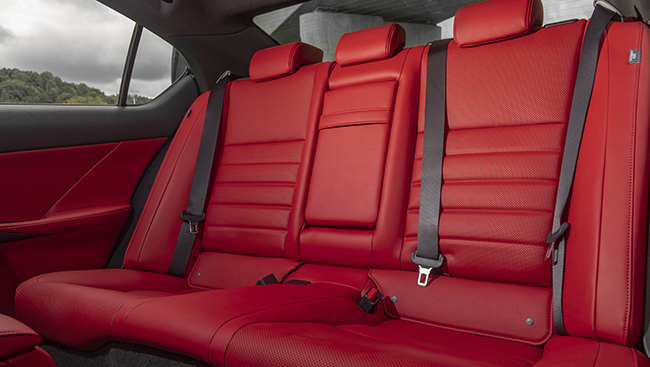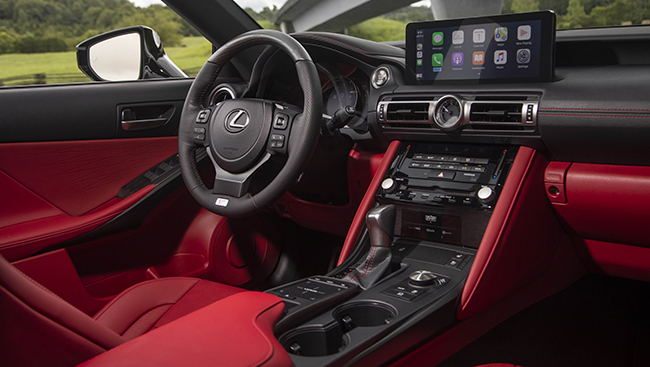While Lexus’ IS line remains a third generation product that originally launched nearly a decade ago, the sporty compact received a major makeover for last year debuting a new exterior design, comfort and convenience features and expanded driver assist functionality.
Looking at its svelte refreshed body — that is stiffer than before thanks to extensive testing at the recently developed $2.8 billion USD Shimoyama facility located in Toyota City, Japan — one would be hard-pressed to tell the model was first introduced back in 2013. If the car appears wider, your eyes aren’t playing tricks as the fenders have been slightly extended to accommodate the bigger available 19-inch alloy wheels and tires.

Similarly, the LED headlights, housing the signature checkmark daytime running light element formerly found on the bumper, and signature spindle grille are both stretched horizontally. Sharper character lines across the sheet metal provide a cool effect when light hits the paint. And at the back end the matching L-shaped blade-style taillights are now connected across the trunk similar to the Lexus UX.
Inside, NuLuxe-trimmed (man-made) leather upholstery is standard, the surfaces in the IS 300 AWD Luxury trim Darpan evaluated dyed a racy dark red colour. The plastic door handles, paddle shifters and various dash bits do take away from the premium experience though.
The larger optional touchscreen display is 10.3 inches (regular unit is eight inches) and placed closer to the driver for easier access, but still seems a little too far. That said I preferred to control the infotainment system via a combination of the haptic-feedback touchpad and physical buttons on the dash. The latter promotes more intuitive operation when compared to poking at virtual icons many of the competing manufacturers are going with.
Speaking of ergonomics, the seating position is optimal even for those on the taller side like myself, and the chunky steering wheel feels great in hand. To be nitpicky, the turn signal stalk doesn’t lock into place when making a hard turn and takes some getting used to. Apple CarPlay and Android Auto connectivity is included, which these days is almost a given.

There are no changes to the powertrain — the same 3.5-litre V6 delivers 260 horsepower and 236 lb-ft of torque, mated to a six-speed automatic transmission. Output is as smooth as always and performance can be tailored to individual driving style by selecting one of the three self-explanatory modes: Normal, Sport and Eco. Throttle and steering response among other attributes are then adjusted accordingly, and in an environment of $2-plus per litre fuel prices the economical setting is a welcome one.

The already-excellent Lexus Safety System+ suite of technologies benefits from a few additions such as enhanced camera and radar equipment to help the pre-collision detection spot not just oncoming vehicles but preceding cyclists and pedestrians as well.
Starting at $48,550, the Luxury grade also packs Lexus Navigation with Remote, proximity sensors, driver’s seat memory, power tilting and telescoping steering column, heated and auto-dimming memory mirrors and the Lexus Adaptive Front Lighting System.
Highlights:
MSRP: $48,550
Motor: 3.5-litre V6
Horsepower: 260 @ 6,400 rpm
Torque (lb-ft): 236 @ 2,000 rpm
Gearbox: six-speed automatic
Layout: all-wheel drive
Fuel economy: 12.3 L/100 km mixed city/highway (observed)
